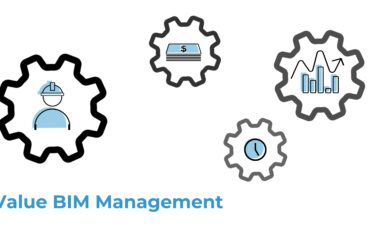Hello everyone! It has been a long time since my last post, a lot of things have happened and I am here to share some thoughts and lessons learned during this time. Let’s get into it.
I have worked on several projects that involved implementing BIM, managing BIM processes, and handing the BIM deliverables to the client/s during this year. It has been a very special experience, as I haven’t managed so many projects at the same time. Naturally, if you find yourself in a case where you have to juggle several projects, you will lay out priorities and cherry-pick those tasks that return the most value when they are accomplished to be done first. Well, under this scenario, I started reflecting on Value BIM Management, what is exactly and how it can be applied to the construction industry.
The start point: Value Management
So, what is Value Management? Defined by the Institute of Value Management Australia as:
Value Management is a planning and review process which is distinctively different to other processes because of its structured approach using a prescribed Work Plan and an analytical focus to achieve best value or, where appropriate, best value for money.
Institute of Value Management Australia
The IVMA will describe it further by adding how it originated in GeneralElectric and how , by applying Value Management, it raised the value of the company’s stock by 4000%. Well, don’t believe all the hype and use some common sense:
All that glitters is not gold.
General Electric grew all that much thanks to Jack Welsh shifting the business model to focus on financial services, more precisely, financial engineering. What that has to do with manufacturing and GE’s core business before Welsh? Not a clue, but it made them a lot of money.
To avoid following in the same trap, and asking architecture practices, engineering firms and construction companies to reinvent themselves as financial conglomerates, I will add to the definition of Value Management:
Value Management is a planning and review process using a predefined Work Plan to achieve the best value or the best value for money, with measurable results and operating in the same industry.
So, how Value Management connects to BIM?
Something remarkable in the AEC industry in the last 10 years has been the explosion of BIM professionals. A minority of them are attracted to BIM because of a genuine passion for new processes that can increase efficiency in the AEC world. Others, because it is required or moving for greener pastures than their traditional roles, as BIM-related roles offer a wider and already well-defined progression path.
The experienced workforce that moved from CAD to BIM brought workflows that were efficient in CAD, but they are no longer the processes that return the most value for money. The BIM industry as a whole is still very behind in the capabilities that full BIM software can offer. Automation, machine vision, collaboration, source control, and digital twins are not only buzzwords, they are tools that have been in the market for way longer than we dare to recognize as their adoption can help the AEC industry be much more efficient, competitive and move forward.
The careful planning and staged inclusion of these technologies into workflows in architectural, engineering and construction companies, is what I call BIM Value Management.
Value BIM Management in the AEC industry
Going back to the starting point of this article. I have taken part in big projects with tight deliverable times, fully documented in BIM. Some of the consultants were using CAD, legacies system will always be somewhere, so as BIM Manager and Computational Designer, it is my role to foresee and deal with these issues. The combination of these skills allows me to automatically model pipes from CAD files, convert Rhino models to Revit native elements, and change naming conventions in a model with a click of the mouse.
In order to bring the most value, BIM Managers cannot bring the most value to their clients if they don’t incorporate Computational Design practices into the BIM processes. Automation or design through code has brought a new revolution to the AEC industry, and the later it is adopted, the more money will be spent down the road to try to play catch up, or worse, trying to survive.
This doesn’t mean that every tiny thing needs to be automated, but general things like Naming Standards can be easily automated saving hundreds of man hours. The key is to pick up repetitive tasks, for example, ISO19650 compliance, and automate it for the benefit of the entire practice.
Final thoughts
The Architecture industry has been slow in introducing changes in how they operate and design buildings. The first challenge that arises is how they are fixated on keeping old ways of doing things, meaning designing. The main problem with this is that only a minority of clients see the value of it, and they prefer to have a better return of value for money.
For an architect, a good design has monetary value and aesthetical value. Meanwhile, to the client, the design is measured by value for money, and most often than not, design is poor value for money.
BIMicon
Value BIM Management offers two ways out of this dilemma:
- Automate the documentation process so architects have more time to design
- Automate the design process so we get better designs, more energy-efficient buildings and higher quality construction through standardisation.
The roads have been opened, walking it or not is our choice.
Sources:
Institute of Value Management Australia: https://ivma.org.au/who-we-are/history-of-ivma/
Rise and fall of General Electric: https://www.investopedia.com/insights/rise-and-fall-ge/

Leave a Reply